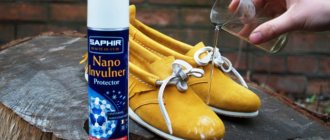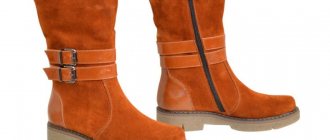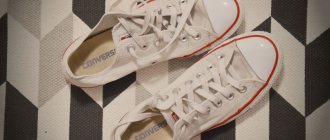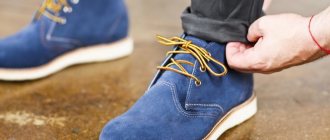Proper care of velor shoes
Sub-zero temperatures for natural velor are not as scary as walking in the rain or stepping into a puddle, so the first rule of caring for velor shoes is to go out only in dry weather. Other recommendations for any pair of this type of pile material:
- Drying shoes away from artificial air heating devices;
- Cleaning stains of any origin must be done on dry material;
- To preserve the original color of the shoes, it is necessary to protect the product from direct sunlight.
Even with proper care and compliance with all conditions to preserve the appearance of a beautiful pair, situations arise when it is necessary to eliminate stains or restore the softness and brightness of color to the pile. To correct such nuances, there are special cosmetics for velor shoes, as well as a collection of folk methods that perform the same functions with less money.
Among the professional tools that will help you properly care for velor:
- Stain removers in the form of foaming sprays and liquids in a bottle with a sponge;
- Erasers for cleaning mud stains;
- Dyes or color restorers;
- Brushes of several levels of hardness;
- Water-repellent impregnations.
The rehabilitation of velor, that is, the return of a product that has lost its appearance to its original appearance, should only be entrusted to specialized means. Homemade methods to restore faded boots to a bright color or to disguise deep damage will not work.
Use in the footwear industry
To understand what kind of shoe material this is - natural velor, and what products can be made from it, you should pay attention to its properties. It is quite light and soft, but not very resistant to moisture and dirt. Therefore, it is optimal to use it for products that are worn during the dry season - sandals, shoes, light shoes, boots or ankle boots. Velor retains heat well, so winter shoes made of this material warm its owner well in cold weather.
An excellent choice would be classic leather velvet shoes; the material will quickly fit your feet, so tight pumps or uncomfortable oxfords will no longer cause discomfort in a matter of days.
Differences in caring for natural and artificial velor
The beautiful outer side of velor has a rough, velvety surface, which has a lot of advantages, but is also quite finicky to care for. The raw materials are made from goat or pig skins, which indicates the high wearability of the shoe frame; however, a model that has lost its presentable appearance, even if all wearable qualities are preserved, is not suitable for publication. For this reason, many thrifty consumers, when planning a purchase, choose shoes made from artificial material, which is cheaper in cost and more tolerant of changeable weather conditions.
Natural velor quickly becomes filled with dust, and can only be cleaned with a special brush using movements against the pile, which is already a difficult procedure, since the “smoothing” of the villi should not be allowed. Artificial velor can be washed with warm soapy water and even turpentine can be used to clean complex stains, and to raise the pile, you can buy not a set of brushes of varying hardness, but one rubber one.
Leather shoes will have to be hidden from the sun, and if they fade, you will have to purchase an expensive aerosol dye of the strictly required shade; the velor-like material reacts calmly to ultraviolet radiation, and to properly protect the color and structure, it is sometimes enough to treat it with inexpensive textile impregnations.
General tips for caring for both materials include cleaning the product after it has completely dried and gently drying it at room temperature and without using heating devices.
How is it different from suede and nubuck?
Nubuck, suede and velor are special types of leather. Without deep knowledge of leatherworking, you can easily confuse materials. However, to understand how to distinguish velor from suede, there is no need to study the craft. It is enough to know some of the features of these types of raw materials, which clearly show: velor or suede have become the basis for charming shoes.
To understand the difference between these similar materials, it is enough to carefully examine the product. Natural suede is made from the skins of elk, deer, and small breeds of farm animals. For its production, materials of excellent quality are used, without the slightest defect. Differences in tanning should also be taken into account - suede is tanned using the fat method, and velor, like nubuck, is tanned using the chrome method. Another characteristic difference between suede is that both the front and back parts of the material are fleecy.
Suede shoes have a different feel - they have a distinct leather smell, which “leather velvet” and nubuck do not have. In addition, it has noticeable pores that other materials do not have. The difference between natural suede can be seen by running your hand over the material - if there are no traces left, then this is it. In addition, velor and suede differ in cost; the first material is significantly more expensive.
Caring for new shoes
As a rule, before putting on a velor pair for the first time, a thorough three-time impregnation is carried out, protecting the shoes from moisture, dirt and the chemical effects of road reagents.
Primary impregnation, done according to all the rules, provides a certain margin of safety for all subsequent wear.
It will not be possible to perform the action using improvised means - neither glycerin nor other substances from the pharmacy are suitable for velor, so buying a good spray cannot be avoided.
The liquid is sprayed onto the material from a distance of 20 cm until deeply moistened, then the shoes are kept for 2-3 hours until completely dry and the procedure is repeated. In total, pile shoes require three approaches of impregnation, after which, after a few hours, you can go outside in them.
Folk remedies
If moisture accidentally gets on a new pair, the lint can gather into hard, sharp lumps that are difficult to separate into individual lint and do not become softer when combed with a brush. A steam procedure will help. The boot needs to be held over a pan of boiling water for 1-2 minutes, turning the product so that the entire surface of the velor is slightly “soaked”. After this, the shoes should be thoroughly wiped with flannel or cloth, and after half an hour, the pile should be “knocked out” with a stiff brush.
To clean dirt from the new model, a crust of dried bread is suitable, which is used to rub the dirty area in a circular motion, and then wipe off the crumbs with a dry napkin. To remove critical greasy stains, talc, starch or baby powder are used - the powder is sprinkled on the stain, and after five minutes the problem area is gently wiped with a cloth.
Professional products
The primary treatment of new shoes, as the most important step in their potential protection, is carried out only with special means; amateur activities are unacceptable here:
- Collonil “Carbon Pro” is an aerosol impregnation with a protective layer effect based on polymer fibers. Seams treated with the compound do not allow moisture to pass through, and dirt flows off the surface of the shoe without causing harm to it. Protects colors from fading;
- Duke Velor Cleaner - an eraser for cleaning stains of non-greasy origin - can only be used on dry velor. It saves you from glossiness, but on the condition that when treating a shiny or dirty area, the treatment will be carried out without pressure.
It is best to buy impregnation agents and dyes for renovation at the retail outlet where the shoes were purchased.
Cleaning without washing
When you just need to refresh the product, clean it with a dry soft brush, and then wipe it with a damp sponge or well-twisted rag. The crushed areas are wiped with denatured alcohol and the treated areas are held over steam, then rubbed with a stiff brush to lift the pile. After drying, brush over them with a soft brush.
You can do it differently: hang the item over the steam (put a bowl of boiling water under it), then lightly moisten a soft-bristled brush in gasoline and run it over the fabric, first against the pile, then in the direction. This procedure will renew the color of the material and make it shine again.
How to care for velor shoes in winter
A snowy, frosty winter without slushy periods is a favorable time for velor renewal and all daily care will consist only of shaking off the snow from the surface of the shoes upon arrival home. Ice already poses a great danger to the material - roads are sprinkled with reagents that have a detrimental effect on velor. Therefore, traditionally, an expensive winter model made of capricious pile leather is not considered intended for daily wear and is reserved for mild snowy periods or dry weather.
At this seasonal stage, products that protect against moisture penetration and instantly remove traces of salt and chemical compounds from shoes are relevant.
Folk remedies
Non-critical stains or stains from the sand used to sprinkle sidewalks can be cleaned with a stationery eraser made of white rubber or a transparent substance containing silicone. Then you need to use a hair brush, which will restore the pattern of the pile and remove the “pellets” of used rubber.
Old complex stains left from last year, or aggravated by unsuccessful attempts at grouting, are removed with gasoline or vinegar diluted with water (1:1). Medium stains can be removed with ethyl alcohol. However, these methods require preliminary testing on an inconspicuous area of the leather product.
Professional products
In winter, the emphasis on proper care of a velor product is on protecting it from moisture and road reagents, which is why intensive impregnations and cleaning fluids are widely used:
- Salamander Professional (Winter Proper) - the spray is sprayed onto the entire surface of the shoe, as the treated area will become a little brighter. Then use a sponge to wipe the areas of contamination locally. Pre-testing required;
- Saphir (Omni Diam) for “general” cleaning of heavily soiled shoes from stains of any depth of penetration. Removes greasy, salt and mud stains, restores color. The product comes with a brush, which foams the product directly on the surface of the boots.
After products that strongly moisturize the skin, it is recommended to perform steam treatment over boiling water or using a household steam generator.
How to remove white spots on material
Speaking about how to care for velor shoes in winter, it is worth mentioning such an unpleasant moment as the frequent appearance of white salt stains on the front surface. They can appear even after the use of protective impregnations, which clearly indicates the negative impact of the environment on products made from such leather.
When trying to remove dirt, it is worth considering the fact that velor is sensitive to chemicals. The wrong choice of product can ruin the material. Therefore, when stains appear, you can use the following solutions for cleaning:
- water + soap;
- water + washing powder.
To get rid of unsightly stains, prepare a cleaning product, soak a piece of cloth in it and gently wipe the problem area. The stains will disappear instantly. Let the shoes dry completely and then apply protection.
To ensure that such problems do not occur, spare expensive shoes and try not to wear them in bad weather.
How to care for velor shoes in summer
Dust, which gets into the pores of light but impractical summer shoes, especially if they are closed women's shoes or men's moccasins with complex trim, suppresses the rich color of the product, making it dull, and the dust suspension, whipped up by rain into liquid dirt, eats into the shoes and penetrates into deep layers of skin. Foam cleaners specifically for velor leather, nubuck or suede help to clean such contaminants, and from home remedies they choose proven methods recommended only during the warm period, when shoes dry quickly.
Folk remedies
To clean shoes from splashes of liquid dirt, a weakly concentrated solution of baby laundry detergent or laundry soap will help.
You cannot wash shoes with this composition - you need to moisten a flannel napkin, wring it out and wipe the stained area previously treated with a brush with a cloth.
Another remedy from the same collection is ammonia, diluted 1:5 with purified water. Using a cotton pad moistened with this product, wipe the area with the stain locally. No further rinsing is required.
Professional products
To clean dust particles from the surface of pile leather, double-sided brushes are purchased, in which the soft side - made of rubber, nylon or hair - directly removes dust, and the other side, made of plastic or metal, gives the pile its original pattern.
Among the cleaning products recommended for summer shoes:
- Salamander Professional (Combi Proper) is a foamy substance from a German manufacturer that is suitable for color pigments of any durability, as well as for products made from combined materials. Apply to the dirt and spread with a foam sponge. After 3-5 minutes, wipe the shoes with a dry cloth and fluff up the pile;
- Shoe Clean is a cleaner for serious stains that comes with a brush and a small sponge. The composition contains citric acid as a color fixative, so the pigment of the shoe surface does not suffer.
Despite the growing popularity of returning to traditional methods for caring for clothes and shoes, professionals warn against blind trust in methods from the “folk piggy bank.” Production technologies for tanning pile leather do not stand still, which means many methods from the past are losing relevance. Before using any such product, you need to check its effect on the inside of the shoe and only then use the composition on the front side.
What is
Genuine leather is an absolute favorite in the shoe industry, and its variations allow you to create real designer masterpieces. One of the most exquisite varieties is velor or “leather velvet”.
Velor for shoes is made from the skins of young cattle, sheep, and pigs. Leather with small defects on the front side is often used. It is tanned using the chrome method, using chemical salts to enhance hairiness. The skins are carefully sanded, obtaining a low, dense pile of uniform color. The process can use various types of starch, simple proteins, and vegetable glue.
To make velor moisture-resistant, aluminum and chrome soaps and silicone are used. The fabric is dyed in rich colors; this process is quite labor-intensive, since the material does not absorb pigment well.
It is difficult for an inexperienced person to understand the difference between velor and suede, since the materials have a similar structure. However, the latter type is produced in a different way. The canvases also differ in appearance and feel - “leather velvet” has a shorter, denser pile, and its surface is softer.
Preparation
- After returning from the street, shoes should be cleaned of dust and dirt using a brush or a slightly damp cloth if the shoes are very dirty;
- Then, in case of severe contamination, you need to remove the old cream from the surface of the leather, using special shoe shampoos;
- After this, apply a suitable shoe polish of the desired color in a not too thick layer;
- Shoes should be polished a couple of hours after applying the cream, using special brushes or fur velvet cloths. Do not put too much pressure on the skin.
Important! Choose a brand according to your financial capabilities. This could be “Salamander”, “Twist” or their analogues. The can will be marked for what material the product is intended for. Read it carefully.











